
ADVENDURE is the leading web portal in Greece about Mountain Running, Adventure, Endurance and other Mountain Sports
Well, not all trades are fair but still, 10.000 kilometers for 100 miles sounds like a good catch! Having trouble to get the big picture? Let me help you understand better. The distance from Thessaloniki, Greece to Auburn, California is approximately 10.000 kilometers. That, I found out when I was trying to calculate how far from home I am going to travel. If you draw a red line from one place to the other it is, surely, going to be a long one and you’ll have to cross the Atlantic Ocean too! Hours and hours squeezed on an airplane’s passenger seat not knowing how to spend my time until I reach my destination. That is the way I imagine my trip to Auburn, California. So, does it really sound good to trade 10.000 kilometers for 100 miles?
On the other hand, we’re talking about the 100 miles of the Western States Endurance Run! The most prestigious ultra-trail race on planet earth, not to mention the first of its kind! Actually, this might be the main reason for WSER’s worldwide fame! It’s the oldest ultra-trail race that marked the history of all trail running.
This whole thing goes back in 1955 when Wendell T. Robie wanted to prove that horses could cover 100 miles in less than 24 hours. Since then, he organized an annual event with other horsemen trying to do the same thing. The goal was to cover the distance of the Western State’s Trail in one day or less. Doesn’t this story remind you an era of cowboys with their fancy hats and spurs, riding their horses?
This could be, indeed, the script of an epic western movie! John Wayne, Clint Eastwood, Lee Van Cleef dashing towards the sunset as they cross Dusty Corners (WSER checkpoint)! Alright, so when is running involved? If I want to be honest with you, I don’t have the slightest idea but I am aware of someone who does! He might, also, be the one to persuade me into trading 10.000 kilometers for 100 miles!
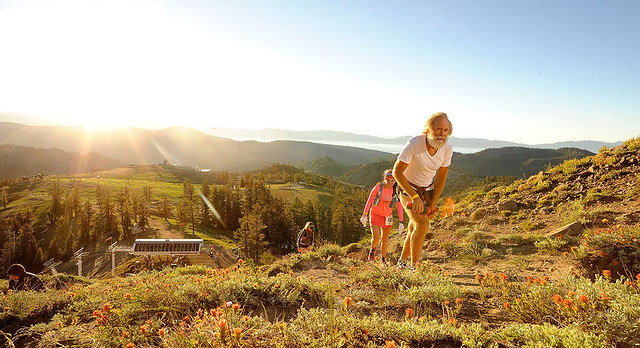
We are very happy to host at Advendure Mr. Craig Thornley, Race Director of the Western States Endurance Race, in this exclusive interview for Advendure and the world trail-running community.
[Advendure]: So, really, when is trail-running involved in this event that is now known as WSER? Could you, please, describe the history of WSER shortly? Where there any “key” moments that determined the course of this great event and shaped it into what WSER has now become?
[Craig Thornley]: As you alluded to, it all started when Wendell Robie, a horseman and Auburn luminary, decided to ride from Tahoe City to Auburn with a handful of other horseman in 1955. They made it. Through Wendell’s energy and vision, he subsequently founded the Western States Trail Foundation and the annual Tevis Cup horse ride.
In 1972, a group of 20 U.S. Army infantrymen attempted to hike the trail nonstop, starting one day ahead of the Tevis Cup ride. They were guided by a local horseman, Jim Larimer (who would finish Western States seven years later). Details of the hike are sketchy at best, with some rumored to have taken a short cut and Larimer reporting that several had taken rides on his horse at various points along the way. Nonetheless, seven of the 20 made it all the way to Auburn, in times between 44:54 and 46:49.
In 1974, woodcutter and Tevis veteran, Gordy Ainsleigh, after a year of contemplation and coaxing, decided to try to do Tevis without his horse. Starting with the horses, Gordy made it to Auburn in twenty-three hours and forty-two minutes, ahead of the 24 hour absolute cutoff.
In 1975 another runner attempted it but fell short of Auburn. In 1976 Gordy’s friend Ken Shirk (a.k.a. Cowman) became the 2nd runner to finish. In 1977 14 men from four states participated in the 1st official Western States Endurance Run, which was held in conjunction with the Tevis Cup Ride.
1978 was the first year the Run was conducted separate from the Ride. While still part of the Western States Trail Foundation, the independence of the new Western States Endurance Run board was established.
The race continued to grow and in 1981 a lottery was used to select the entrants. When the Granite Chief Wilderness was created in 1984, the Race was threatened as organized events are not allowed in US wilderness areas. After four years of legal battling, the Race and the Tevis were grandfathered in and allow to proceed through Granite Chief provided they didn’t exceed the numbers pre-wilderness. The number of starters in 1984 was 369 and that is the why we’re only allowed 369 starters to this day.
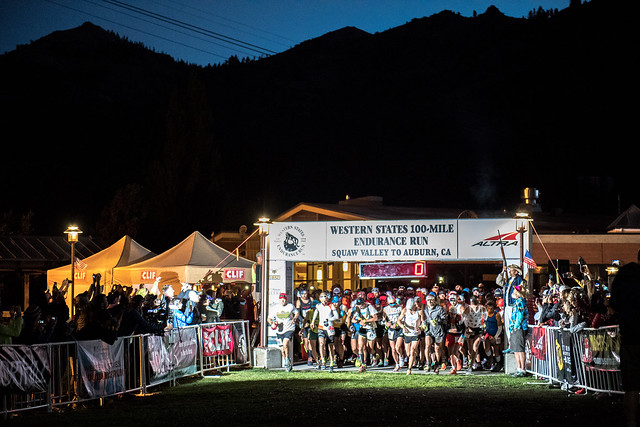
[Advendure]: Can you present to us the team behind the Western States Endurance Race? I know there are a lot of people involved in this event so I would like to ask you only to name the few that really pull the strings. Are they trail-runners or they are just the wheels to get things done?
[Craig Thornley]: The 15-member board of trustees of the non-profit Western States Endurance Run Foundation is not just a policy board, they are very active in the operations of the race. Most of them have run WS many times, including one of our vice presidents, Tim Twietmeyer, who has finished WS 25 times, Secretary Charles Savage with 20 finishes, past President John Trent with 10, and Karl Hoagland who will be going for his 10th finish this year. While I’m the only [full-time] employee, I have four paid managers who get a small stipend; all making a living in professions outside of WS. They do the most significant amount of the actual production of the race. There are many other key volunteers, including 21 aid station captains, medical director, ham radio coordinator, sweep coordinator, etc. who manage other volunteers. Almost all of them are runners, even the ham radio coordinator. We ordered 1700 volunteer shirts this year! Most of our aid stations are sponsored by running clubs and the folks who volunteer at the stations are experienced ultrarunners. That is one thing that separates Western States from other events I’ve been involved with. The volunteers really know the event and the trail.
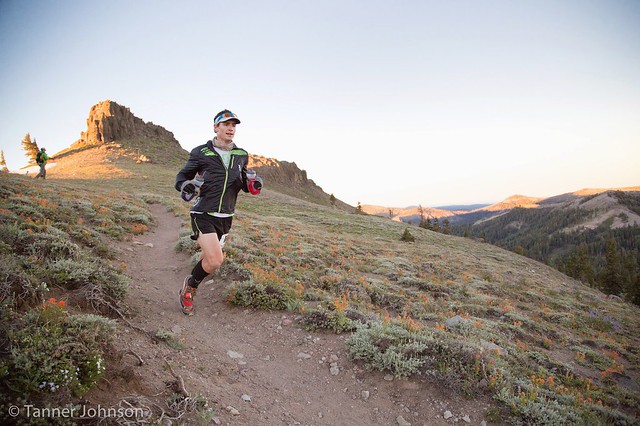
[Advendure]: We are not living in the United States so it’s a bit hard to understand the magnitude of this race in your country. Therefore, could you tell us more about what WSER meant to an average trail-runner then (20 years before for instance) and what it means now? Have you spotted any significant changes as the time went by all these years?
[Craig Thornley]: The history of Western States, in terms of the trail, the gold miners, and the number of runners who have traveled from Squaw to Auburn on foot; the beauty of the terrain the trail traverses, from the high sierra through the rugged canyons and then to the hot foothills; the authenticity of the point to point course; and the exposure/hype the race has always received. All of those have contributed to the allure. The fact that the number of starters remains fixed and demand continues to increase also adds to the allure. I think the most significant change has been the exposure of the race to the world. Much of the increase in demand for WS has come from outside of the US.

[Advendure]: Numbers! Let’s talk about numbers. Everyone loves numbers! How many runners, in total, applied for this year’s event? How many of them were lucky enough to get drawn in the lottery? Is there a specific reason for not accepting more runners? Have you considered changing the lottery ticket equation to another one, similar, for example, to the one of the UTMB? If no, why is that?
[Craig Thornley]: We had 4909 applicants for the lottery this year. After reserving 105 spots for automatics (top ten men/women from 2017, each aid station designates one runner, UTWT elite athletes, raffle winners, Gordy, board members, some sponsor agreements include a spot in the race), we drew 261 in the lottery and then the final three from the live lottery audience.
While we’re always looking to improve our selection process, we are generally pleased with our 2^(n-1) algorithm and 50 person wait list. That is, each year you’re in the lottery and not drawn you get double the number of tickets the following year. This rewards those who are persistent and apply year after year but also gives a reasonable chance for somebody who may only be in the sport for 4-5 years to get a chance to run. With a single ticket the chances of getting drawn were about 2%. For those who have been in the past seven lotteries and not been selected, the odds of at least one of their 64 tickets getting drawn was about 75%.
New beginning last year is the drawing of a 50 person wait list in addition to the 369 entrants. When a runner withdraws from the race the next person on the wait list is offered a spot. If they chose not to run they don’t lose their ticket counts for the next lottery. So far this year with 11 days to go before the race we’ve had 18 wait listers get into the race. We’ll continue to move runners from wait list to entrants list up to Friday afternoon before the race. This allows us to get exactly 369 and adds some excitement leading up to the race.
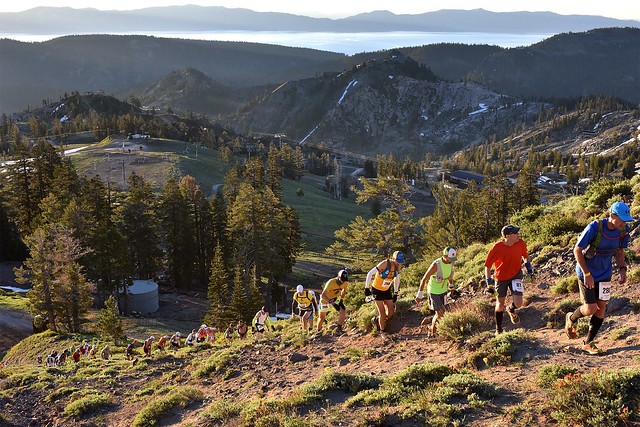
[Advendure]: Please, tell us a few things about the technical characteristics of the course. Are there any tricky points or places that need extreme caution? Is it a race for runners or hikers? I mean, are there steep climb ups and downs or not? Does it consist of rocky and rugged terrain that’s going to trouble the ones participating for the first time?
[Craig Thornley]: It’s definitely a runner’s course, with a net downhill of 5000’. The course begins at 6,200’ and climbs to the high point of 8,700’ in the first four miles out of Squaw Valley. The high country (first 30 or so miles) are a bit rocky and technical but also very special as we run through many miles of true American wilderness. The middle section goes in and out of several canyons as the course heads down the Middle Fork of the American River drainage and past many old historic and abandoned gold mining towns. These are hot and steep downs and then ups. After mile 62 (Foresthill) the course is relatively benign as the trail enters the foothills, eventually ending up in Auburn at 1,200 feet elevation.
[Advendure]: The Western States Endurance Race is part of the Ultra Trail World Tour calendar. Could you describe the benefits of this relationship? Does it worth, for other organizers, to include their trail-race events in the UTWT calendar?
[Craig Thornley]: We joined UTWT at the very beginning in 2013. Our involvement helps six international athletes come to California and run WS each year. While it is difficult to quantify the benefits, our exposure to the world and the ability to work with race directors from all over the world has been good for WS in my opinion. Right now there are 22 races in the tour and we’re at a point that adding too many more races might dilute the brand and the specialness of being part of the tour.
[Advendure]: Advendure is, proudly, an official media partner of the Ultra Trail World Tour. Have you ever visited our website? What do you think of all the articles, related to trail running and other mountain activities, which are written?
[Craig Thornley]:I have seen it, but I haven’t spent too much time there. There is so much content out there to consume I have a difficult time carving out the time to read everything I’d like to.
[Advendure]: You have recently added a Greek ultra-trail race in the list of your qualifying races for the WSER. Salewa Olympus Mythical Trail is a very tough race and we, Greeks, admit that. Instead, we don’t know what made you pick this particular race among others held in our country. Can you comment this decision?
[Craig Thornley]: I wasn’t involved in making the selection so I can’t comment on the race specifically. But generally, we’re trying to include races with geographic diversity so runners from all over the world can run a qualifier to get a chance to run WS.

[Advendure]: It is, also, very common in most European ultra-trail events to organize shorter distance races in the same time with the main event. The Ultra Trail Mont Blanc race is, again, a very good example of what I’m trying to say. On the contrary, you have never had another event held together with the WSER. Can you tell us more about that?
[Craig Thornley]: No, we haven't and don't have any plans to do so in the near future.
[Advendure]: The Western States Endurance Race always attracted the world’s best trail runners! Could you tell us some elite athletes that intend to do their best in order to win the race this year? We’ve already heard that Francois D’Haene, last year’s UTMB winner, is one of them. Maybe, you’d like to make a guess for the athletes on the podium.
[Craig Thornley]: First let’s talk about the women’s field, which is arguably the deepest we’ve ever had. We have three past champions in the race: Stephanie Howe Violett, Kaci LIckteig, and Pam Smith. Defending Women’s Champion Cat Bradley, unfortunately withdrew from the race recently. In addition we have Camille Heron and Courtney Dauwalter both who are capable of winning even though neither has a WS finish. Then there are the international UTWT runners who could also be up there vying for the win: Lucy Bartholomew from Austrailia, Cecilia Flori from New Zealand, Emilie Lecomte from France. Another Golden Ticket winner who could be in the mix for the win is Canadian Ailsa MacDonald. Other top runners with previous top finishes at WS include Kaytlyn Gerbi, Fiona Hayvice, Nicole Kalogeropoulos and Aliza Lapierre.
The men’s field is also packed. Jim Walmsley is likely to get most of the attention pre-race as he attempts to break the course record for the third time. Francois D’haene, arguably currently the greatest mountain ultrarunner in the world, is coming back for the third time (in 2015 he ran 18:12 and in 2016 he sprained his ankle the week before the race and didn’t start). Jaren Hazen (3rd in 2015) and Didrik Hermansen (2nd in 2016), Mark Hammond (3rd in 2017) have both run fast at WS previously. Aside from Jim and Jared, the other Coconino Cowboys from Flagstaff are sure to be in the mix: Tim Frericks, Eric Senseman, Cody Reed. Jeff Browning has had several solid finishes and is coming back after his third place finish in 2017. Other fast guys include Zach Bitter who has run 11:40 for 100 miles and now lives in the Phoenix, Golden Ticket winners Mario Mendoza from Bend, Oregon, and Florian Neuschwander from Germany.
Karl Meltzer could break the longest standing age group record at WS, Doug Latimer’s 18:43 50+ record set in 1988. And then there are the five septuagenarians in field, four of which could become the oldest finisher ever at WS.
Overall, WS 2018 will be very fun to watch unfold.

[Advendure]: During the WSER, most of the runners use the assistance of a pacer, wherever this is allowed, but here, in Greece, you won’t find an ultra-trail race where this is not forbidden. Why do you think that the role of a pacer is so important? Should someone, who runs the WSER for the first time, ask for the help of a pacer?
[Craig Thornley]: The use of the pacer began in the early years of WS (1970s) as an optional safety measure, and as a way to get more people exposed to the event. Since we are still limited to only 369 runners there can be long stretches of time without seeing another runner. The safety concern is still there but probably less so. But sharing the trail with a pacer is part of the WS experience. Unless you are totally comfortable and want to run by yourself, yes, I’d recommend getting a pacer. It’s fun for them too. As my brother once said, “It’s like going to the doctor and getting a shot of “YOU CAN DO IT!!!” in your ass. Being with somebody and feeling the tremendous effort that is required for them just to get to the finish line is a gift.”
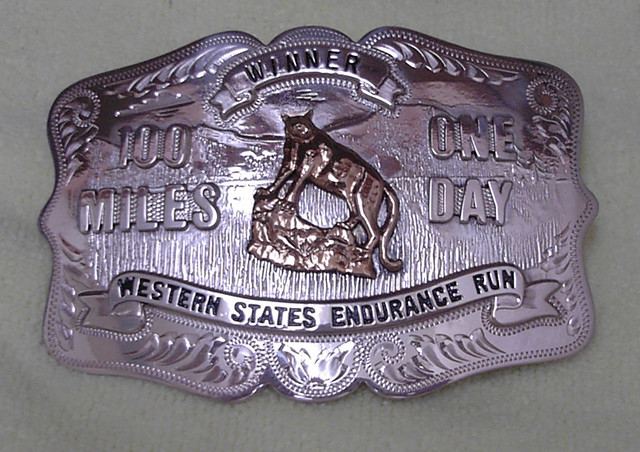
[Advendure]: My last question is very typical but, still, I have to ask you, for everyone who is reading this interview and for me, also. What piece of advice can you give us in order to reach the finish line, in Auburn, smiling and happy?
[Craig Thornley]: Manage the heat. Keep yourself as wet and iced down as possible. While we have been criticized for having too many aid station, the 21 aid stations stocked with 20,000 pounds of ice help runners stay cool. Take advantage of that. The other big challenge are the downhills and taking care to not damage your quads. The terrain is relatively easy after Foresthill (62 miles) but you have to have the legs to run it. Don’t run too hard on the downs in the first half of the race.
[Advendure]: Obviously, whoever gets to trade 10.000 kilometers for 100 miles is one lucky dude! Thank you for your time Mr. Craig Thornley, we hope to see you in Greece some day soon!
Theoharis Lezpouridis